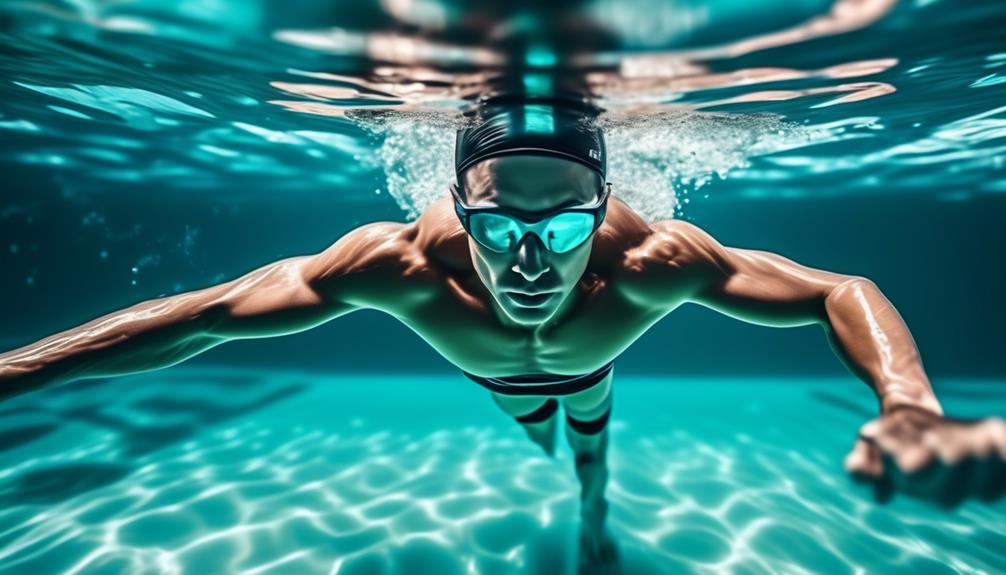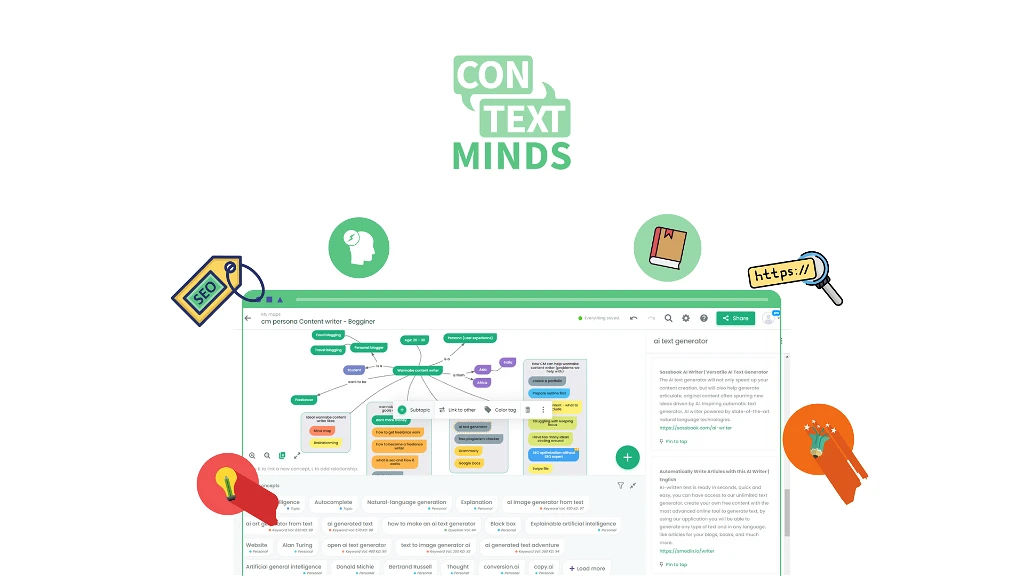Have you ever wondered if fitness trackers can make a difference in your swimming performance? Imagine being able to analyze your stroke efficiency, monitor your heart rate in the water, and track your distance and lap count – all with the help of a small device on your wrist.
Fitness trackers offer these features and more, allowing swimmers to gain valuable insights into their technique and training. But can these devices truly enhance your swimming performance?
Fitness trackers can improve swimming performance. Many fitness trackers are waterproof and can track metrics such as distance swam, stroke rate, and heart rate while swimming. By tracking these metrics, swimmers can analyze their performance and make adjustments to improve their technique and efficiency in the water. Fitness trackers can also provide motivation and help swimmers set and track goals.
In this discussion, we will explore the potential benefits of fitness trackers for swimmers and consider whether they can truly make a difference in the pool. So, let’s dive in and explore the possibilities together.
Key Takeaways
- Fitness trackers provide enhanced tracking capabilities and advanced features for swimmers, such as real-time data analysis and specific swim metrics, which can help identify areas of improvement.
- Analyzing stroke efficiency with fitness trackers allows for accurate tracking of stroke count, monitoring lap times, measuring swimming distance, and automatic recognition of stroke type, all of which contribute to optimizing speed and performance.
- Water-resistant fitness trackers with swim-centric features like heart rate monitoring, lap counting, and stroke analysis are crucial for monitoring heart rate in the water and enhancing performance in both pool and open water environments.
- When choosing a water-resistant heart rate monitor, it is important to consider factors such as water resistance rating, swim-centric features, smartphone pairing capabilities, trust and reliability in testing, and the specific type of swimming for finding a suitable monitor.
The Potential Benefits of Fitness Trackers for Swimmers
Fitness trackers offer a range of potential benefits for swimmers, enhancing performance through improved tracking capabilities and advanced features. These devices, such as the Fitbit Charge 6 and Garmin Vivosmart 5, are equipped with heart rate sensors and GPS tracking that enable swimmers to monitor their heart rate and track their distance, pace, and route. By providing real-time data, fitness trackers allow swimmers to analyze their performance and make adjustments to improve their swimming technique and efficiency.
Specific swim metrics are available on certain fitness trackers, like the Garmin Swim 2, which can measure stroke count, distance, and critical swim speed. These metrics provide swimmers with valuable insights into their performance, allowing them to identify areas for improvement and set specific goals. Additionally, fitness trackers offer features such as stress management scores, daily readiness scores, and advanced sleep coaching, which optimize overall performance and recovery.
Waterproof fitness trackers like the Garmin Swim 2, Fitbit Charge 4, and Apple Watch Series 6 are designed to withstand the water and provide accurate tracking during swimming. These devices also offer advanced features like ECG and blood oxygen level monitoring, which can provide swimmers with valuable health insights.
Analyzing Stroke Efficiency With Fitness Trackers
To analyze stroke efficiency with fitness trackers, swimmers can utilize specific features that measure factors such as stroke count, lap time, and swimming distance. These fitness trackers offer a range of capabilities that can provide valuable insights into your swimming performance.
Here are some ways in which fitness trackers can help you analyze your stroke efficiency:
- Stroke Count: Fitness trackers can accurately track the number of strokes you take during each lap, giving you an understanding of your stroke efficiency and allowing you to identify any inconsistencies or areas for improvement.
- Lap Time: By tracking your lap times, fitness trackers enable you to monitor your speed and identify any variations in your performance. This information can help you optimize your training and make necessary adjustments to improve your stroke efficiency.
- Swimming Distance: Fitness trackers can accurately measure the distance you swim, whether in a pool or open water. This data allows you to track your progress over time and set goals for increasing your swimming distance.
- Stroke Type Recognition: Some fitness trackers have the ability to automatically recognize the type of stroke you’re performing. This feature allows you to analyze the efficiency of each stroke and make adjustments accordingly.
- Heart Rate Monitoring: Fitness trackers with heart rate monitoring capabilities provide additional insights into your swimming performance. By tracking your heart rate during swimming sessions, you can gauge your exertion levels and tailor your training accordingly.
Monitoring Heart Rate in the Water
To optimize your training intensity and avoid overexertion in the water, utilizing water-resistant fitness trackers like the Garmin Swim 2 and Fitbit Charge 6 can provide accurate heart rate monitoring during your swimming sessions.
These wrist fitness trackers offer swim-centric features such as lap counting and swim stroke analysis, providing valuable real-time feedback to help you improve your performance in the water.
Additionally, advanced features like stroke recognition and specific tracking modes for other water sports enhance the overall swimming experience, making it essential to choose a waterproof fitness tracker that has been rigorously tested and proven reliable by both experts and users.
Water-Resistant Heart Rate Monitors
With accurate heart rate tracking being essential for improving swimming performance, a water-resistant heart rate monitor becomes a crucial tool for monitoring heart rate in the water. When selecting a water-resistant heart rate monitor for swimming, consider the following:
- Look for a water resistance rating of at least 5 ATM to ensure it can withstand water pressure during swimming.
- Opt for a monitor that offers swim-centric features like lap counting and stroke analysis, such as the Garmin Swim 2.
- Check if the monitor has pairing capabilities with smartphones for easy data syncing and swim-specific features like interval timers and target heart rate zones.
- Trust and reliability in testing products are important to ensure accurate and consistent performance in the water.
- Consider the specific type of swimming you engage in, whether it’s open water swimming or pool swimming, to find a monitor that suits your needs.
Benefits of Real-Time Feedback
Real-time feedback from monitoring heart rate in the water provides immediate insight into exertion levels during swimming sessions. By utilizing wearable technology, such as water-resistant heart rate monitors, swimmers can track their heart rate in both pool or open water environments.
This real-time feedback allows swimmers to make necessary adjustments to maintain optimal heart rate zones for improved endurance and performance. Moreover, monitoring heart rate fluctuations during intense swimming workouts helps in avoiding overexertion and potential injury.
The data-driven training approach, enabled by real-time feedback on heart rate variability, aids in personalized workout adjustments tailored to individual needs. Additionally, monitoring heart rate changes post-swim facilitates efficient recovery, contributing to better overall training management.
With improved battery life and the ability to track swimming-specific metrics, fitness trackers offer swimmers valuable insights for optimizing their swimming workouts and maximizing calorie burn.
Tracking Distance and Lap Count
When it comes to tracking distance and lap count, fitness trackers offer valuable tools for swimmers.
With stroke efficiency tracking, these devices provide insights into how efficiently you’re moving through the water, allowing you to identify areas for improvement.
Additionally, fitness trackers can monitor your training intensity, ensuring that you’re pushing yourself enough during your swim sessions.
Stroke Efficiency Tracking
Fitness trackers have become valuable tools for swimmers looking to enhance their performance. Here are five ways in which stroke efficiency tracking can be improved with the help of fitness trackers:
- Garmin Swim 2 offers heart-rate monitoring and tools for both pool and open water swimming, allowing for comprehensive tracking.
- The Garmin Swim 2 assesses stroke, distance, time, and other traditional measures in the pool, providing precise data for analysis.
- It logs specific stroke drills and rest periods, allowing swimmers to track their progress and make necessary adjustments.
- The Garmin Swim 2 features Critical Swim Speed, which helps determine anaerobic threshold pace, enabling swimmers to optimize their training.
- With its built-in GPS, the Garmin Swim 2 also provides location tracking for open water swimming, ensuring accurate distance measurement.
Training Intensity Monitoring
Training intensity monitoring can be enhanced by fitness trackers through the tracking of distance and lap count. Fitbit Charge 5 offers features such as heart rate monitoring, calorie tracking, and exercise duration, allowing you to measure your training intensity during both pool and open water swims.
With Apple Watch, you can automatically lock the screen during swimming workouts and track strokes and total distance, providing valuable data on your training intensity.
Galaxy Watch 5 provides heart rate data and advanced sleep coaching, allowing you to track your progress and optimize your fitness activities.
Garmin Swim 2 offers specific tools for pool and open water swimming, including the ability to log stroke drills and rest periods, helping you monitor your training intensity and improve your swim styles.
Improving Technique Through Data Analysis
Swimmers can enhance their technique by harnessing the power of data analysis through fitness trackers. These devices provide valuable insights into stroke efficiency, stroke count, and lap times, allowing you to make informed decisions about your training.
Here are five ways data analysis can help improve your swimming technique:
- Tracking heart rate and stroke rate: By monitoring these metrics, you can identify areas for improvement in your swimming technique, such as reducing stroke count or increasing stroke efficiency.
- Setting specific training goals: Analyzing data on swim distance, pace, and stroke count allows you to set specific goals and measure your progress over time. This helps you stay motivated and focused on improving your technique.
- Identifying performance patterns: By analyzing your data, you can identify patterns in your performance, such as slower lap times or increased stroke count. This information enables you to make adjustments to your technique and improve efficiency and speed in the water.
- Developing effective training plans: Data analysis provides valuable feedback on your swimming technique, allowing you to develop more effective training plans and strategies. This ensures that you’re targeting areas that need improvement and maximizing your training sessions.
- Improving overall performance: By utilizing a fitness tracker that’s specifically designed for swimming, such as the Apple Watch or other top-rated smartwatches with optical heart rate monitoring, you can track your swim metrics accurately and consistently. This enables you to make data-driven decisions to enhance your technique and improve your overall performance in the pool or open water.
Enhancing Training With Time Metrics
By harnessing the power of time metrics, you can further enhance your training and improve your overall performance in the water. Fitness trackers such as the Fitbit Charge, SAMSUNG Gear Fit, Amazfit Band, and Garmin Swim 2 offer features specifically designed to help you track your swimming progress and optimize your workouts.
One key metric to focus on is stroke distance. By measuring the distance covered with each stroke, you can evaluate the efficiency of your technique and make adjustments as needed. This metric allows you to analyze the effectiveness of your strokes and maximize your speed and endurance in the water.
Additionally, tracking your time and pace during swimming workouts can provide valuable insights into your performance. You can set goals based on your desired pace and monitor your progress in real-time. This information can help you push yourself to swim faster and ultimately improve your overall speed and efficiency.
Some fitness trackers also offer advanced features like automatic screen locking, blood oxygen saturation monitoring, and integration with workout apps like Google Fit and Apple Watch. These features allow you to track and analyze your swimming data in greater detail, enabling you to make informed decisions about your training and monitor your progress over time.
Identifying Inconsistencies in Performance
To optimize swimming performance, it’s crucial to identify and analyze inconsistencies in various performance metrics. By utilizing fitness trackers such as the Apple Watch Ultra or the Fitbit Inspire, swimmers can accurately track their progress and identify areas for improvement. These devices offer a range of features and smartwatch capabilities that make them ideal tools for monitoring swimming performance.
Here are five reasons why identifying inconsistencies in performance is important:
- Customizable Action button: Fitness trackers like the Apple Watch Ultra allow swimmers to customize their tracking experience, making it easier to identify inconsistencies and track progress.
- Indoor cycling: Some fitness trackers, such as the Fitbit Inspire, offer indoor cycling tracking capabilities. This feature can help swimmers analyze their performance during cross-training sessions and identify inconsistencies in their workouts.
- Accurate stroke tracking: Fitness trackers equipped with advanced sensors can accurately track the number of strokes taken during a swim. By analyzing this data, swimmers can identify inconsistencies in stroke technique and make necessary adjustments.
- Trend analysis: By comparing performance data over time, swimmers can identify trends and inconsistencies in their training. This information can guide them in refining their technique and optimizing their training regimen for better results.
- Performance optimization: Recognizing inconsistencies in performance is crucial for improving swimming efficiency and speed. By identifying and addressing areas of weakness, swimmers can target specific improvements and enhance their overall performance in the water.
Limitations of Fitness Trackers in Swimming Performance Improvement
When utilizing fitness trackers to improve swimming performance, it’s important to be aware of the limitations that may affect the accuracy of the data collected. Fitness trackers, such as smartwatches equipped with sensors, offer features like GPS tracking, activity tracking, and health monitoring. However, when it comes to swimming, these devices may face certain limitations that can impact their effectiveness.
One limitation is the accuracy of measuring swimming distance. Water can interfere with GPS signals, leading to inaccurate distance measurements. Additionally, fitness trackers may not accurately track swimming strokes and styles, which can result in unreliable performance data. The water can also affect the sensors used to measure heart rate, making it difficult to obtain accurate readings while swimming.
Furthermore, the underwater tracking capabilities of fitness trackers can vary, affecting the accuracy of data for both pool and open water swimming. Some trackers may not provide advanced swim-specific metrics such as stroke length, swim efficiency, and turn analysis. These limitations can hinder the ability to accurately assess and improve swimming performance.
Frequently Asked Questions
Which Fitness Tracker Is Best for Swimming?
The best fitness tracker for swimming combines water resistance, accurate heart rate monitoring, and features like distance and speed tracking. Look for trackers with stroke detection, long battery life, and the ability to sync and analyze swimming data for customizable workouts.
Are Fitbits Good for Swimming?
Fitbits are good for swimming as they offer benefits like personalized swim metrics and enhanced swim training. Waterproof fitness trackers are a game changer for swimmers, improving accuracy in tracking swimming performance.
How Do You Track Swimming Improvement?
To track swimming improvement, utilize technology to monitor heart rate, stroke analysis, distance, pace, and GPS for open water progress. Compare swim tracking devices and analyze data to enhance training and integrate metrics with fitness goals.
Which Smartwatch Is Best for Swimming Laps?
The best smartwatch for swimming laps is the Garmin Vivosmart 5. It has excellent swim tracking features, a larger display, and great battery life. It’s a reliable choice to monitor your performance in the pool.
Conclusion
In conclusion, fitness trackers have the potential to revolutionize swimming performance.
By providing swimmers with valuable data and insights, these devices can act as a compass, guiding swimmers towards their goals.
Just as a lighthouse illuminates the path for ships, fitness trackers illuminate the path to improved technique, increased endurance, and ultimately, enhanced swimming performance.
With these tools at their disposal, swimmers can dive into the depths of their potential and emerge victorious, breaking through the waves of mediocrity.





